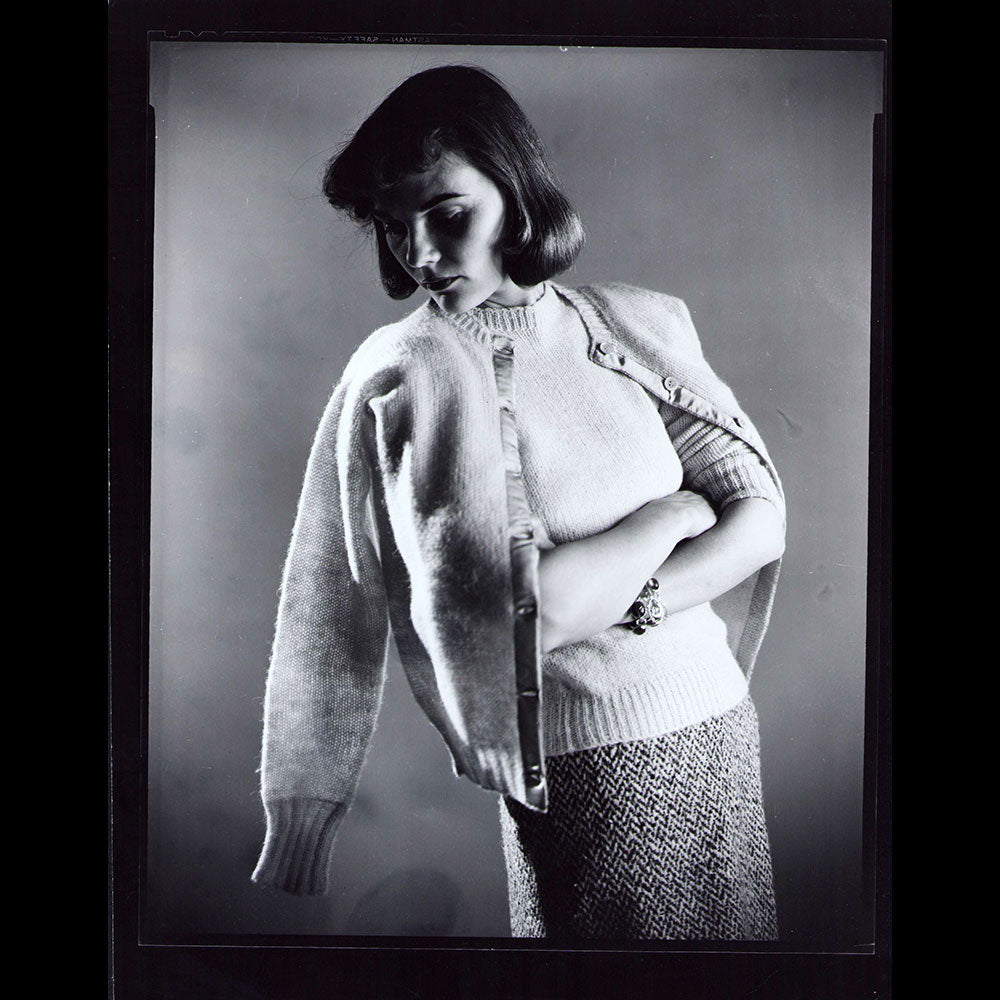
Martin Munkacsi - The Twin sweater, étude pour Harper's Bazaar (1940)
Bon exemplaire d'un tirage argentique des années 1960 d'une photographie de Martin Munkacsi. Il s'agit d'une étude d'un ensemble twin set effectuée pour Harper's Bazaar en 1940.
L'image est reproduite dans le numéro de février 1940 de l'édition américaine de Harper's Bazaar accompagnée de la légende suivante : "The twin sweater - it knows no age limits child, girl, and woman, the American female has adopted it as her national emblem. Brooks started the idea, and every sweater manufacturer in the land had to pitch in to keep up with the demand. Best has it, hand-knit, in Shetland wool."
| Titre | The Twin sweater, Harper's Bazaar (1940) |
| Type | Photographie |
| Édition | New York, circa 1960s |
| Description |
Tirage argentique des années 1960. Note manuscrite au crayon au verso du tirage. |
| État | Bon état, traces de manipulation. |
| Dimensions | 280 x 220 mm |
L'introduction du catalogue Martin Munkacsi publiée par la Howard Greenberg Gallery en 1985 est faite par Joan Munkacsi, la fille de Martin Munkacsi qui revient sur la rareté des tirages de son père et la lente reconnaissance de la photographie par les musées : "
"My father used to tell me, chuckling, that "a picture is worth more than a thousand words; it's worth a thousand dollars" but he printed very few of those pictures for any purpose other than publication.
Why? Although he repeatedly argued against granting photography the status of art, he unquestionably believed that he was an artist whose medium was photography. But he started out as a sports photographer, then became a photojournalist, then a fashion photographer; his subject matter was intrinsically of the moment, was in one way or another "news" and we all know about yesterday's news. Salon photography held no attraction for him, nor did posed, formal compositions. And of course he practiced his métier by and large at a time when there were no museum collections of photography, no galleries, no private collections.
By 1950 he had fallen out of favor as a photographer (after his death in 1963 not one museum or picture archive would accept the donation of his prints and negatives). And so, because no one else valued his prints in and of themselves, neither, really, did he.
The prints that he made for himself, the ones that have come down to me, are his favorites- sometimes also his best work, but sometimes just the images that meant the most to him."
Choisir les options

